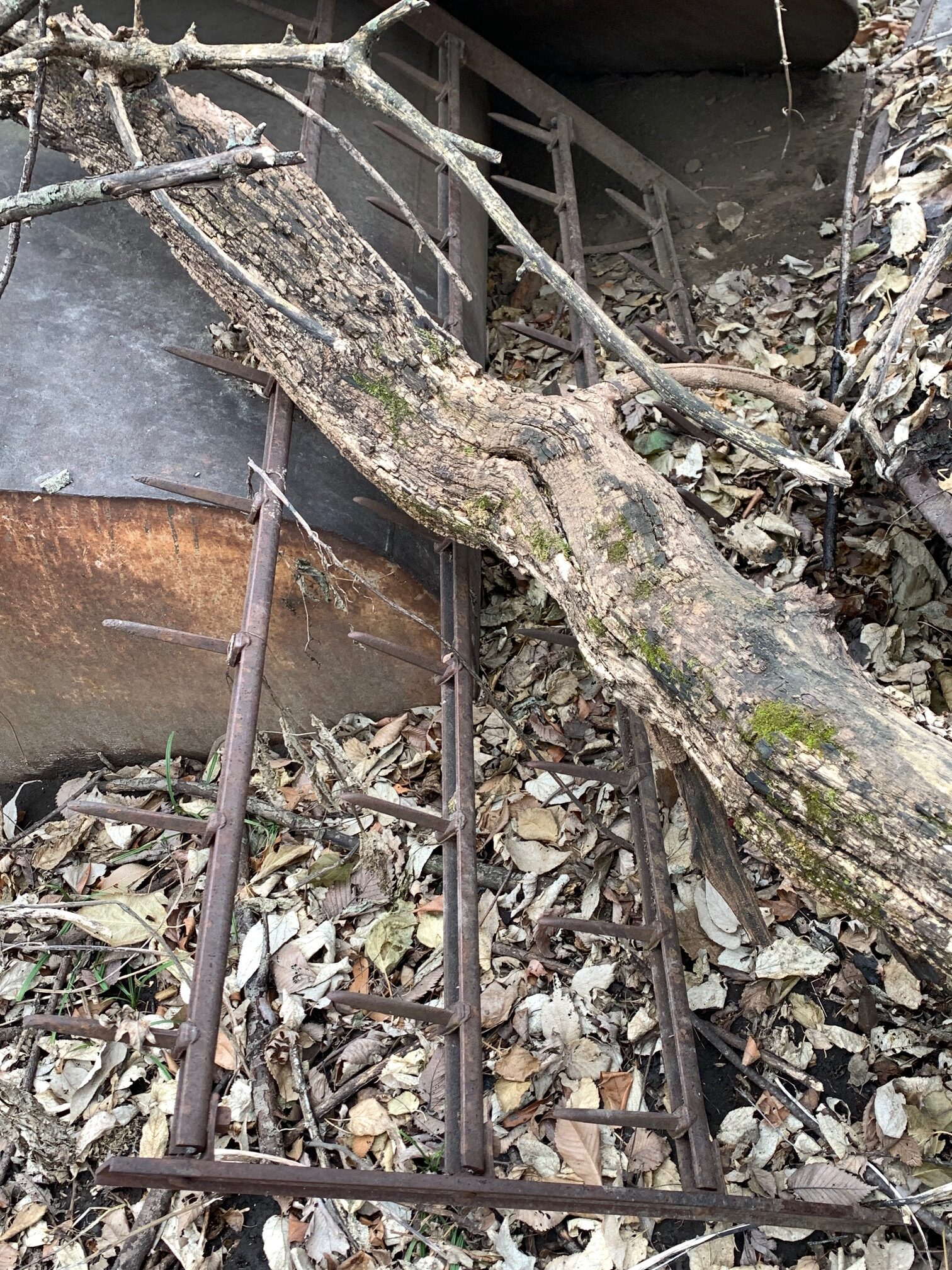What do you do with a piece of farm equipment when you have no more use for it? The ideal answer is probably to load it up and take it to a disposal site such as a landfill or a recycling center. That’s not what farmers have done for generations though. The standard practice, carried out on Owl Acres and most other Iowa farms, is to dump it back in the woods where it will rot down over time. It will be out of sight, out of mind, and mostly covered up with vegetation in a fence row.
Now that the leaves are off the trees, the junk in the fence row is suddenly visible. Among the items exposed are pieces of equipment once used to fertilize, till and harvest fields of oats, hay, corn and beans. Parts of a harrow, a manure spreader, a separator and a saw mill emerged, relics of yesterday’s farming practices.
The methods for farming around Owl Acres started out to be the same as farmers had used for thousands of years. They used a walking plow to turn over the top layers of soil. Then they used a harrow to break up the clods. Once they had a finely crumbled seedbed, they would broadcast the seed by hand over the field. Then they’d drag the harrow across the field again to cover up the seeds. As the first weeds began to peek out of the ground, the farmer used the harrow once more, dragging it over the emerging crop. Weeds with their shallow root systems were uprooted while the crop plants such as oats with their deeper root systems were left to flourish without competition from the weeds.
When harvest time came around, farmers used a sickle to cut the stalks of grain, and then a flail to beat the grain, knocking it loose from the stalks.
All this work would require between 250 and 300 labor hours to complete for every five acres farmed. So it’s no surprise that as farmers broke the Iowa prairies, they would look for easier ways to do the work. And when something better came along, like the John Deere plow, farmers were quick to adopt new ways.
The purpose of the harrow was to break up clods of dirt into fine crumbs, creating a fine seedbed for a crop such as oats. For centuries, farmers made their own harrows by pounding pegs into a log or branch and then dragging it along the plowed field behind horses or oxen. By the time Owl Acres was settled, farmers were using square harrows made of metal frames with rows of teeth that dragged along the ground. In the latter half of the 19th century, harrows were being manufactured with rows of adjustable metal teeth. Levers allowed the farmer to change the angle of the teeth and thus the depth of the tillage. The harrows of today aren’t much different.
The word harrow comes from old English or Dutch meaning a rake. Along with referring to an agricultural implement, though, the word harrow or more commonly harrowing today usually refers to a painful or frightening experience.
The Bible contains a couple of references to the harrow. One, in Job 39:10, refers to the agricultural use of the harrow. Another, 2 Samuel 12:31 describes its use as an instrument of torture and death. Perhaps that’s where we get our common usage for “harrowing experiences.”
The harrow in the fence row is only a section of a larger implement. It outlived its usefulness years ago. And now with the trend toward no-till farming, harrows in general have less relevance today than in years past.
We could clean up that fence row, but that would disturb significant habitat for a variety of critters. Maybe another year we’ll clean it up, but for now we’ll wait for snow to blanket everything and we’ll take the out of sight out of mind approach.
Photo by Author. Alt text: Unlovely photo of a derelict piece of farm machinery, discarded into the woods. A tree limb fell across it years ago and is there today. It emerges from the dense understory each fall. Called a “section of harrow” by old timers, it’s a frame holding four parallel bars, each studded with 5-inch-long teeth, spaced every 8 inches along its length and staggered. Bars are pivoted like axles to bring their teeth into more or less aggressive contact with the soil following primary and secondary tillage (plowing and disking). Pulled behind a team or a tractor to break up clods and prepare a smooth seedbed for planting.

1 comment
I always learn something from reading your blog, Karen! Thanks!